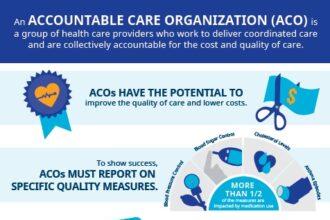 Announcing the Life Force 3000 Smartwatch—the fashion accessory that continuously monitors health status by sampling body temper
Announcing the Life Force 3000 Smartwatch—the fashion accessory that continuously monitors health status by sampling body temper
 Announcing the Life Force 3000 Smartwatch—the fashion accessory that continuously monitors health status by sampling body temperature, heart rate, heart rhythm, respiration, blood oxygenation, and blood pressure. It furthermore will detect 24 critical blood chemistries including pH, pCO2, hemoglobin A1c, and blood glucose. Painless intradermal microprobe sensors detect red and white cell counts including cell morphology. Advanced “lab on a chip” technology continuously detects and streams physiologic variations to powerful, cloud based computing systems where scientifically proven algorithms predict impending infections by viral, bacterial, or parasitic pathogens well before symptoms appear. Sensors may also accurately predict impending vital organ failure long before such failures become a threat to life. Much like the computer and engine sensors in your modern automobile, the Life Force 3000 quietly goes about its work throughout the day and night, calculating billions of data points and only drawing to your attention those factors that pose an immediate or long term threat to your health and well being.
Announcing the Life Force 3000 Smartwatch—the fashion accessory that continuously monitors health status by sampling body temperature, heart rate, heart rhythm, respiration, blood oxygenation, and blood pressure. It furthermore will detect 24 critical blood chemistries including pH, pCO2, hemoglobin A1c, and blood glucose. Painless intradermal microprobe sensors detect red and white cell counts including cell morphology. Advanced “lab on a chip” technology continuously detects and streams physiologic variations to powerful, cloud based computing systems where scientifically proven algorithms predict impending infections by viral, bacterial, or parasitic pathogens well before symptoms appear. Sensors may also accurately predict impending vital organ failure long before such failures become a threat to life. Much like the computer and engine sensors in your modern automobile, the Life Force 3000 quietly goes about its work throughout the day and night, calculating billions of data points and only drawing to your attention those factors that pose an immediate or long term threat to your health and well being.
Of course the “Life Force 3000” is a total figment of my imagination. But what if such a device existed? Would you want one? Would you pay for one and if so, how much would you be willing to spend? Technology companies large and small around the world are working on such devices. If you monitor the web as I do, you’ve probably seen announcements of products that are now available or in the pipeline.
Most of these products are rudimentary compared to the Life Force 3000. Recently a Chinese manufacturer of wireless devices sent me a smartwatch in the mail. It does perhaps 50 different things. It features a color touch screen. It can track my activity level, monitor my whereabouts via GPS, measure my heart rate and temperature, calculate my hydration, send SMS messages and e-mail, and even make phone calls. Oh, and did I mention that it can also tell the time?
Would I buy such a device? Probably not. I’m perfectly happy with my current smartphone. It’s a really good cell phone and also a great camera. It has all the apps I could ever want. Frankly I find that I get bored with most of the apps I download after just a few uses anyway. I already have a nice watch, and all that other stuff like heart rate and hydration…… well, that information may be a great conversation-starter at parties but I think it’s really more of a novelty than anything useful. So no, I don’t think I’ll be buying this particular smartwatch anytime soon, nor do I see mass market appeal for most of the other devices I’ve been reading about.
 Eventually, some company will crack the code. I thoroughly believe there is a future for wearable computing devices, biosensors, and the “Internet of things”. However, technology inventors and investors really need to focus on two questions. First, does the invention offer something that most people really need and will use every day even after the novelty wears off? And second, is there a way to significantly monetize the invention and any services built around it?
Eventually, some company will crack the code. I thoroughly believe there is a future for wearable computing devices, biosensors, and the “Internet of things”. However, technology inventors and investors really need to focus on two questions. First, does the invention offer something that most people really need and will use every day even after the novelty wears off? And second, is there a way to significantly monetize the invention and any services built around it?
I find far too many technology companies being completely naïve about health, healthcare and consumer behavior. While vanity sells (sex appeal, beauty, fitness, diet, etc.), disease doesn’t. And if you are going to start measuring things that might influence a clinical decision or treatment, then be prepared for FDA oversight. Companies have learned that lesson the hard way time and time again.
No, I think I’ll wait for the Life Force 3000, but only if it retails for $149.99 or less. Otherwise I’ll be expecting the government or my insurance plan to buy one for me…… unless of course it will improve the appearance of fine wrinkles. Then I might be willing to spend a bit more.






